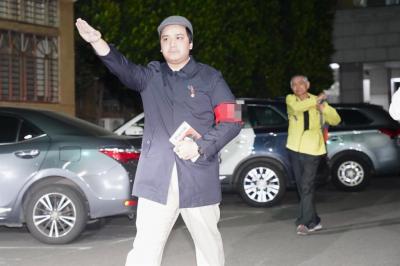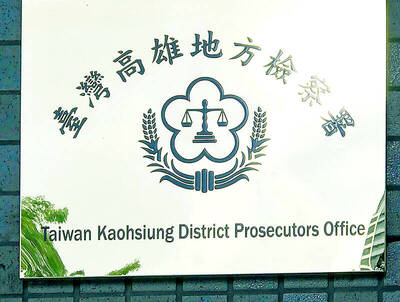The dazzling fireworks show at Taipei 101 has been the climax of New Year’s Eve countdown parties in Taipei since the skyscraper was completed in 2004, but the tradition may become history after a 272m-tall building nearby is completed in 2015.
Media reports say the new building is to be built on a 5,357 ping (17,709m2) plot of land just 60m from the 509m-high Taipei 101 and will have 45 floors, making it the second-tallest building in the city.
The plot of land, which now houses the Taipei World Trade Center’s Hall 2, was leased by the Taipei City Government to Nan Shan Life Insurance Co for 50 years for a royalty of NT$26.8 billion (US$894 million) in a contract that was inked last year.
According to Taipei 101 spokesman Michael Liu (劉家豪), the safety distance for fireworks displays is 100m and although the new building will not be situated right next to Taipei 101, it will be just 60m away.
“The new skyscraper’s close proximity to Taipei 101 poses a problem to the design of the building’s countdown fireworks show. Because the vertical safety distance for fireworks displays is 150m, setting off fireworks from the 89th floor could be a problem,” Liu said.
However, as construction is still in the preparatory phase, this year’s fireworks show is unlikely to be affected, Liu said, adding that Taipei 101 officials would meet with the insurance corporation and the Taipei City Government soon to discuss possible solutions to the problem.
In response, Nan Shan said its project was being carried out in accordance with city regulations and that the planned building’s surroundings had been factored into its design.
“The company hopes that the new building can bring about mutual prosperity with businesses in Xinyi District (信義) and provide a boost to the local economy,” Nan Shan said.
Taipei 101’s fireworks shows led to Taipei being selected by CNN as one of the top 10 destinations in the world in which to welcome a new year.

Taiwan is stepping up plans to create self-sufficient supply chains for combat drones and increase foreign orders from the US to counter China’s numerical superiority, a defense official said on Saturday. Commenting on condition of anonymity, the official said the nation’s armed forces are in agreement with US Admiral Samuel Paparo’s assessment that Taiwan’s military must be prepared to turn the nation’s waters into a “hellscape” for the Chinese People’s Liberation Army (PLA). Paparo, the commander of the US Indo-Pacific Command, reiterated the concept during a Congressional hearing in Washington on Wednesday. He first coined the term in a security conference last

Prosecutors today declined to say who was questioned regarding alleged forgery on petitions to recall Democratic Progressive Party (DPP) legislators, after Chinese-language media earlier reported that members of the Chinese Nationalist Party (KMT) Youth League were brought in for questioning. The Ministry of Justice Investigation Bureau confirmed that two people had been questioned, but did not disclose any further information about the ongoing investigation. KMT Youth League members Lee Hsiao-liang (李孝亮) and Liu Szu-yin (劉思吟) — who are leading the effort to recall DPP caucus chief executive Rosalia Wu (吳思瑤) and Legislator Wu Pei-yi (吳沛憶) — both posted on Facebook saying: “I

Sung Chien-liang (宋建樑), who led efforts to recall Democratic Progressive Party (DPP) Legislator Lee Kun-cheng (李坤城), was released on bail of NT$80,000 today amid outcry over his decision to wear a Nazi armband to questioning the night before. Sung arrived at the New Taipei District Prosecutors’ Office for questioning in a recall petition forgery case last night wearing a red armband bearing a swastika, carrying a copy of Adolf Hitler’s Mein Kampf and giving a Nazi salute. Sung left the building at 1:15am without the armband and covering the book with his coat. Lee said today that this is a serious

A court has approved Kaohsiung prosecutors’ request that two people working for Democratic Progressive Party (DPP) Legislator Lin Dai-hua (林岱樺) be detained, as a probe into two cases allegedly involving her continues. The request was made on Friday, after prosecutors raided Lin’s two offices and the staffers’ residences, and questioned five on suspicion of contravening the Anti-Corruption Act (貪汙治罪條例). The people included the directors of Lin’s Daliao (大寮) and Linyuan (林園) district offices in Kaohsiung, surnamed Chou (周) and Lin (林) respectively, as well as three other staffers. The prosecutors’ move came after they interrogated Lin Dai-hua on Wednesday. She appeared solemn following